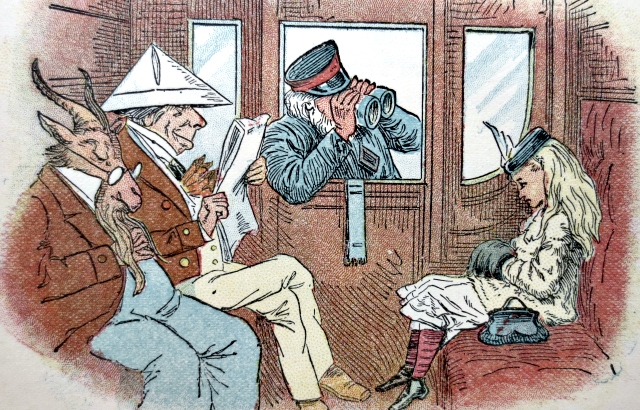Lewis Carroll's Alice and the emergence of a style icon
She’s influenced Lizzie Jagger, inspired Gwen Stefani, and her iconic look has been adapted for everything from tattoos to the hijab. Few literary characters have influenced the way we dress quite so remarkably as Lewis Carroll’s Alice.

A researcher at Queen Mary University of London (QMUL) will next year lead a major project to explore the impact of Alice on fashion and how we dress. The project, entitled Addressing Alice: The Emergence of a Style Icon, will coincide with the 150th anniversary of Carroll’s seminal first edition of Alice’s Adventures in Wonderland.
In 2015, Dr Kiera Vaclavik, Senior Lecturer at QMUL, will curate an exhibition at the V&A Museum of Childhood, and will collaborate with a series of partners including Liberty London, the Lewis Carroll Society, and internationally renowned artists and creative professionals.
Dr Vaclavik will focus particularly on Alice in the nineteenth century, as a way of understanding and charting her character’s remarkable influence on the many styles and trends that followed.
According to Dr Vaclavik:
“Our work will bring together two growing, but mostly separate academic fields: children’s literature and fashion studies. We know that Alice is one of the world’s best loved and most enduring literary heroines, but we understand very little about her extraordinary influence on fashion and style.”
“Alice has endured not just as one of literature’s most famous leading women, but also as a fashion icon. She has had a profound and lasting impact on the way people dress. Over the last 150 years, people from all over the world have sought to mimic, adapt, and reinvent the ‘Alice look’. The impact of Alice on fashion transcends class, cultures and borders, and presents a unique opportunity to examine the interconnectedness of fashion and fiction,” said Dr Vaclavik.
The project explores the many different ways in which Alice was dressed in the books themselves and in the wide array of related articles - from wallpaper to biscuits tins - produced in Carroll's lifetime. It also traces the embodiment of Alice as a character by real children in dramatic adaptations of the stories, and in the hugely popular fancy dress balls and parties of the period.
“Crucially, this approach allows us to place Alice within a literary and artistic context in relation to writers, illustrators, performers and playwrights; but also in the everyday lives and experiences of ordinary children. Alice has authentic widespread appeal – she is for everyone,” said Dr Vaclavik.
Dr Vaclavik will also lead a one-day conference on 9 May 2015, entitled ‘Alice & Fashion: 150 Years of a Style Icon’. The conference is co-organised with the Lewis Carroll Society.
Dr Vaclavik’s work is funded by a two-year Early Career Fellowship from the Arts and Humanities Research Council. During the fellowship, she will also research and produce a book, based on the nineteenth-century themes explored by Addressing Alice: The Emergence of a Style Icon.
About the curator
Kiera Vaclavik is a Senior Lecturer at Queen Mary University of London, based at the School of Languages, Linguistics and Film. Her work focuses on the dynamic field of children’s literature and culture. Her current project as an AHRC Early career fellow is entitled Addressing Alice: The Emergence of a Style Icon.
Related items

25 June 2025

24 June 2025
For media information, contact:
